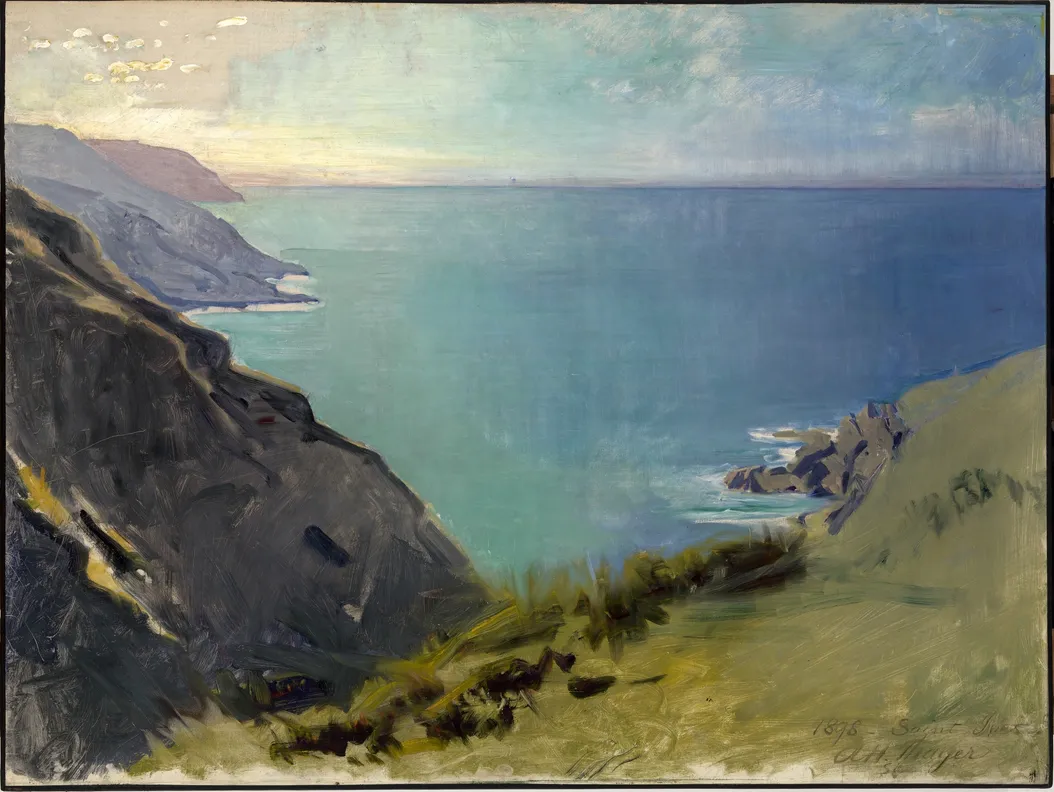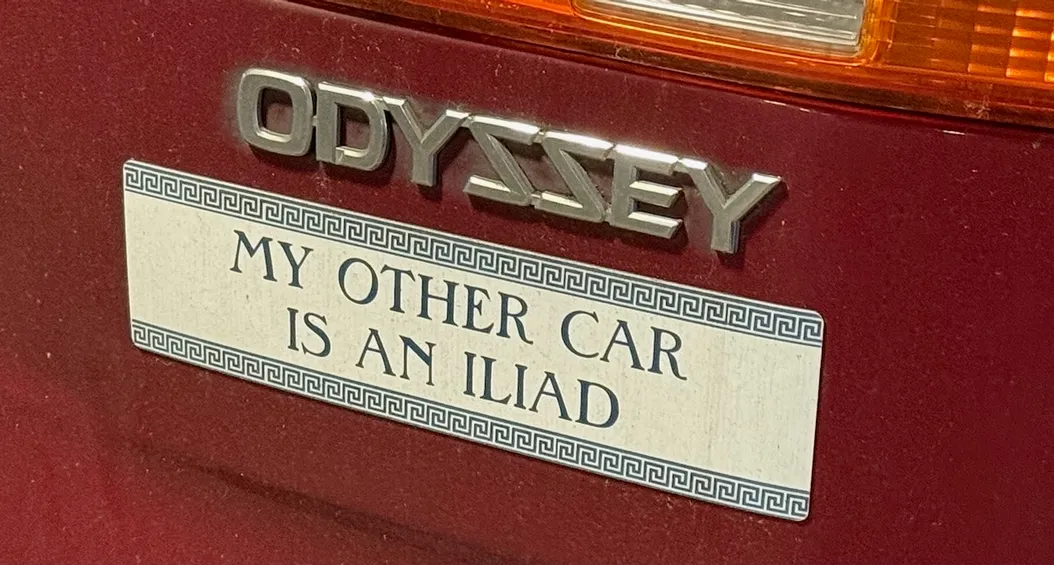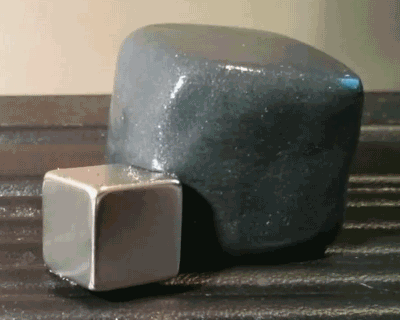
I've been thinking a lot about both how and what to share in this new iteration of my blog/newsletter/membership thing. I've also been doing a lot of thinking about what to share publicly, and what to make available only to supporters.
Here's where I've landed: every month I'll be writing two posts. One is public, like this, and it will be a log of all the stuff I took in, and all the stuff I made. I keep a note in my Obisidan vault (more on that here) about this already called "〰️IN 〰️〰️ OUT 〰️" and it's a nice way of tracking what I've been wading through. The second post will be for subscribers only, and it will dive deeper into something I'm thinking about, struggling with, delighted by, etc. You'll see at the bottom of each of these in//out posts what I'm going to write more about this month.
〰️〰️ IN 〰️
These are things I read, saw, ingested, ate, listened to, or just generally thought about in the last month that I want to share with you. It's an incomplete list (obviously) but it's the stuff I'm still thinking about.
Down Below by Leonora Carrington
Leonora Carrington has always fascinated me — a woman battling her way through the incredibly sexist surrealist movement to assert herself as more than simply a muse, but a peer. Her work is strange of course — she was a surrealist after all — but also contain a kind of rage that I don't get the same sense of when I look at Ernst (her much older lover) or Magritte or Dali. They were having fun. Carrington is doing battle.
Down Below is a strange book. It's a memoir of sorts — recounting the time Carrington spent at an asylum after Ernst was taken to a concentration camp by the Nazis. Carrington fled to Spain, and had a complete mental breakdown. She eventually escaped the asylum, and would ultimately settle in Mexico City where she spent most of the rest of her life. Down Below is itself the results of a kind of warped game of telephone — here's how the book describes the text:
First written in English in 1942 in New York (text now lost). Dictated in French to Jeanne Megnen in 1943, then published in VVV, No. 4, February 1944, in a translation from the French by Victor Llona. The original French dictation was published by Editions Fontaine, Paris, 1946. Both the French dictation and the Victor Llona translation were used as the basis for the text here, which was reviewed and revised for factual accuracy by Leonora Carrington in 1987.
The resulting book is, fittingly, surreal. Carrington recounts incredibly strange feelings with such flat certainty you can't help but believe them. She speaks about her thoughts and feelings at the time as if they were absolutely true. It's impossible to know as a reader which rooms and spaces and events are "real" and which were imagined. The titular "Down Below" is described as a real space that she visits several times — alone and with others. At one point she writes that the map she has included will make it clear how the asylum was setup, but the map we get is a surreal drawing full of strange shapes and winding paths.
Here's another passage:
A hellish half hour followed: I held José and Mercedes by their hands and could not let them go: we were stuck to each other by some overpowering force, no one could speak or move. By an effort of will I managed to detach my hands from theirs; everyone then set to talking at a terrifying rate of speed. Whenever I would get hold of their hands once more, silence reigned immediately and our glances would once more be riveted to each other. This lasted perhaps several hours.
Overall, Down Below is a hard book to describe, and it's strange to claim to have enjoyed it (the book includes descriptions of rape and torture). But I appreciated it, and found it quite compelling. Plus, it was quite useful to me in my research for the novel I'm writing (PROJECT CUBENSIS), which heavily features a similar kind of madness.
The intro to the version I read was written by Marina Warner, a historian who got to know Carrington before she died. Warner's intro is really interesting and full of anecdotes and fun bits. Here are my two favorites:
- Leonora told her father she wanted to be a painter, "but her father considered painting 'horrible and idiotic': 'You didn't do art,' she recalled him saying. 'If you did, you were either poor or homosexual, which were more of less the same sort of crime.'"
- "Lenora once told me that her favorite story from the Bible was Jacob wrestling with the angel. 'We have to hang on,' she said. 'Even if the angel cries 'Let me go, let me go.' We don't listen. No. We have to hang on.' There's a ladder there, in teh background of the biblical account, waiting to be climbed to heaven, but for the moment there here and now on the ground demands struggle."
Here's my favorite Carrington painting — "Pastoral," painted in 1950. But you should check out all her work, if you haven't before.
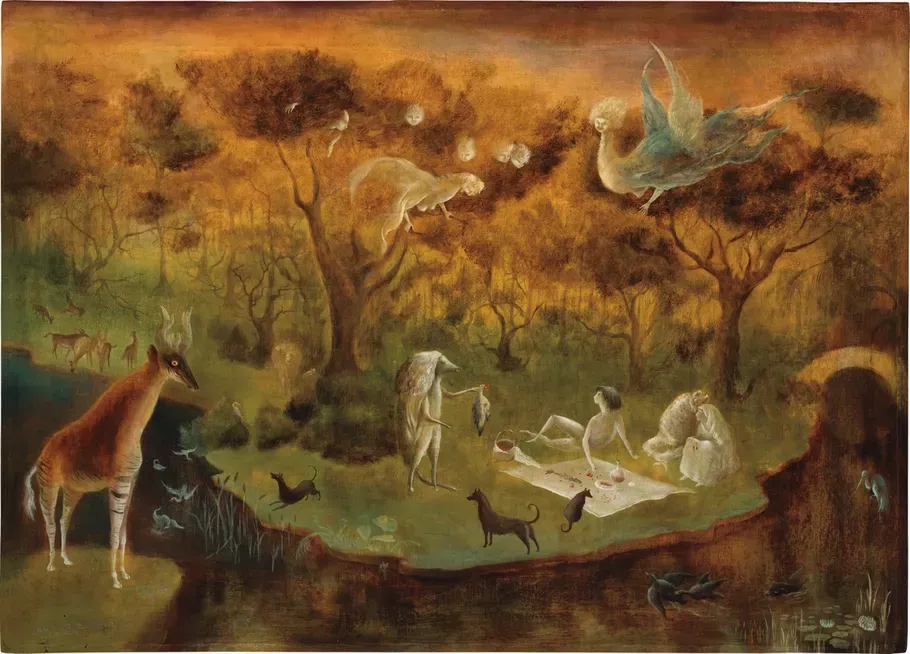
the existence of cave pearls
Did you know that cave pearls were a thing? Formed essentially the same way that oyster pearls are — slowly, around a nucleus — these "speleothems" (surely there's a gender joke in there) can be found in caves all over the world. I find this so intoxicating. Pearls! In caves! Why not? Why wouldn't the process of pearl formation happen in other places aside from an oyster? And yet!
I mean look at these things!
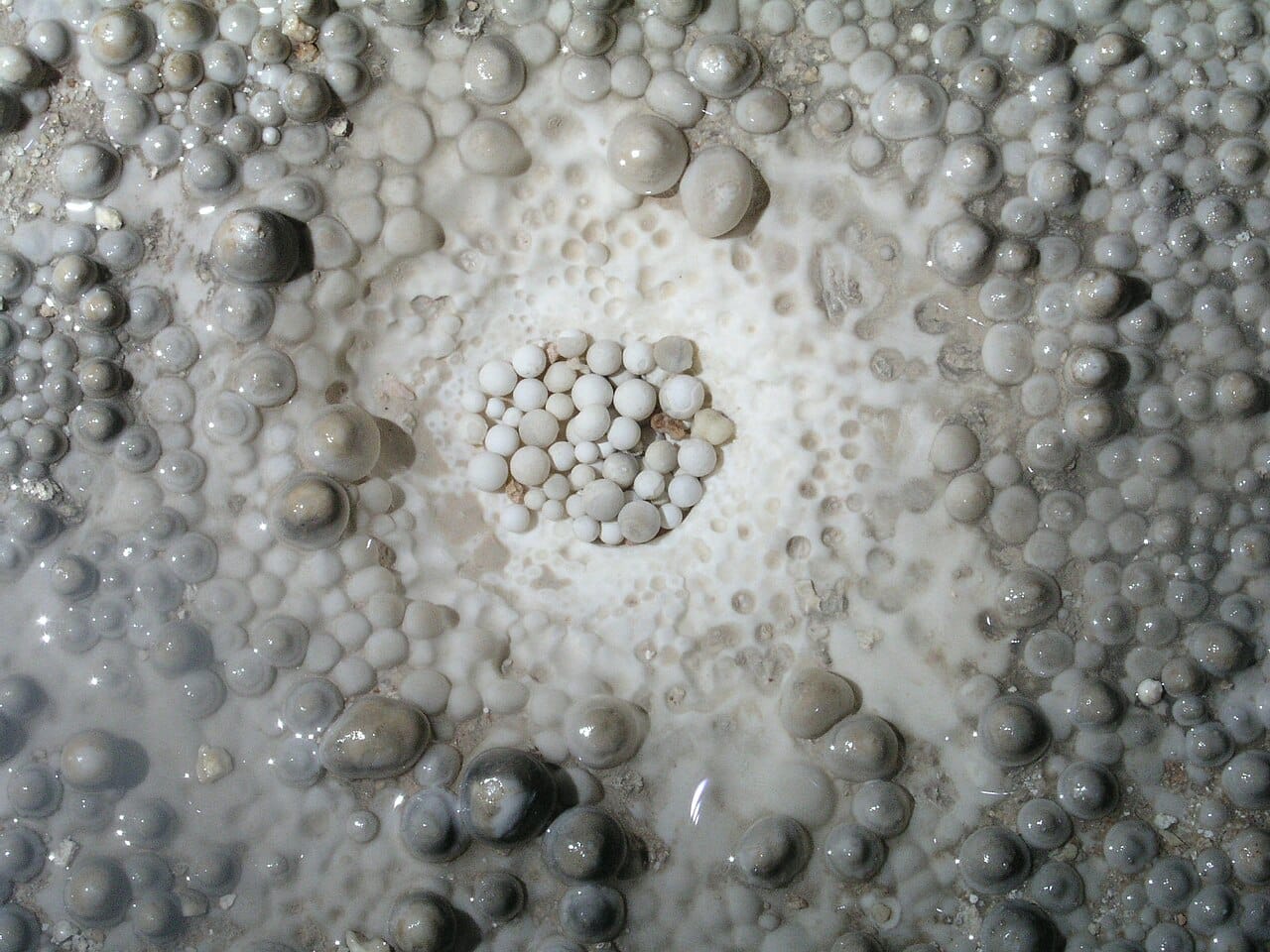
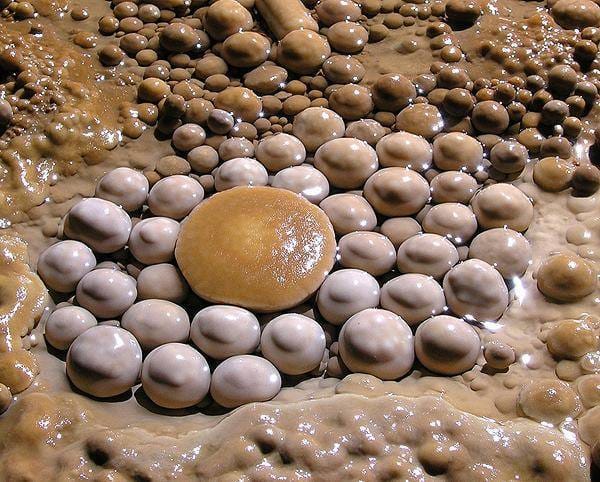
The nucleus of some cave pearls are tiny pieces of bat bones (amazing) and there is some research suggesting that their formation might have a microbial component. They also form far faster than other cave features like stalactites and such — just a hundred years or so and you've got a pearl.
I spent a few hours recently trying to figure out if I could build some kind of cave simulator out of a cat fountain and some calcium carbonate to try and replicate and speed up this process to create some cave pearls in my house. Then I realized that ... I should not try to do that. But it was a fun little exercise!
You can apparently find these in all kinds of places, including New Mexico, so I'm very tempted to create a trip for myself to try and go see some. What strange and marvelous little things.
A Century of Tomorrows by Glenn Adamson
When I first heard this book was coming out, my heart sank. I've been working on a book proposal about the history of futurism (PROJECT OSTOYAE) for many years now on and off, and this book seemed on its face to be... basically exactly that. It would be my own fault of course, if I was scooped on this. If you simply think about doing something and never do it, you can't be mad if someone else does it first.
My agent suggested I get the book and read it before I chuck my proposal in the bin (annoyingly reasonable) so I did. I'm going to save my longer thoughts for the members only newsletter later this month (have to save some of the spicy stuff for the subscribers) but overall I think the book actually isn't making the same case I want to make. It's definitely interesting, and full of compelling examples — including a lot of the same ones I wanted to pull from — but comes to quite different conclusions than the ones I think I'm going to wind up with. What that means for the marketability of my own book, I'm not sure exactly. But at least I feel like I'm still adding something unique to the conversation in the proposal.
The Human Soul Its Movements, Its Lights, and the Iconography of the Fluidic Invisible
PROJECT CUBENSIS takes place in 1918 — an absolutely wild time in both scientific and political history. We were just on the edge of figuring out things like telephones and x-rays and all these invisible forces and sources of information. And so of course there were all kinds of ideas about what else we might be able to see – why not thoughts in the air? Why not ghosts? Why not? (I talk about this at length on this episode of Flash Forward about telepathy.)
This is the moment where a Dr. Hippolyte Baraduc was working — writing a book called The Human Soul : Its Movements, Its Lights, and the Iconography of the Fluidic Invisible. (I learned about this book via Public Domain Review — a beloved resource). The Human Soul is full of amazing images taken by Baraduc that claim to document what he calls "Odic liquid," which "saturates the organism of living beings and constitutes our fluidic body.”
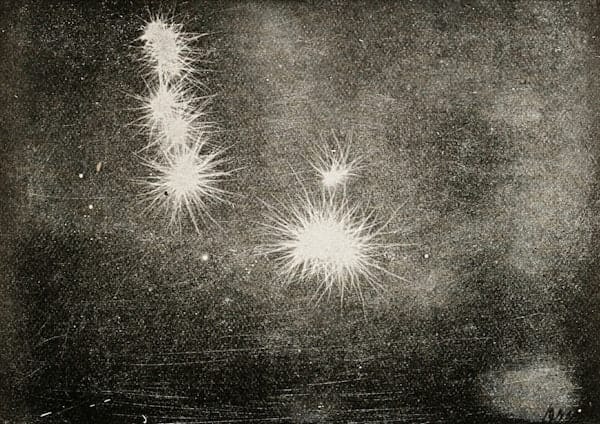
Baraduc would take photographs like this and then make notes like: "Red obscurity. State of soul magnetising; desire-demand, prayer to the psychic universal spirit of the world. The prayer has elliptically inflected a very beautiful net of fine psychic lamellas; subtle cosmic pneuma, universal web of light, of remarkable purity.”
These images are really juicy to me — bursts of light that could mean anything and Baraduc argued meant everything. Of course Baraduc wasn't really measuring anything specific here. But his desire to make sense of the world via instrumentation is compelling to me (and is a core theme of PROJECT CUBENSIS).
And amidst all of his chaotic descriptions of plates being "small entities of subtilising force (soul germ)", he says something that I absolutely agree with:
“Every transaction with a text, a musical score, a painting, or a sculpture, is a personal seance.”
Yes, Baraduc, yes.
Research ideas and methods
I spent a lot of the holiday break trying to improve my method of capturing stuff I see that I want to read/listen to/look at later. In doing so, I read some really fascinating pieces about research and thinking that I encourage you all to check out:
- Research as a Leisure Activity by Celine Nguyen // "When research is your leisure activity, you’ll end up making connections between your existing interests and new ideas or topics. Everything gets pulled into the orbit of your intellectual curiosity."
- Communicating with Slip Boxes by Niklas Luhmann // "One of the most basic presuppositions of communication is that the partners can mutually surprise each other."
- Coming Home by Mandy Brown // “Efficiency is an anti-goal; it is at odds with the work, which requires resistance and tension in order to come into being.”
- We're not good enough not to practice by Kiese Laymn // "Be driven. Be curious. Write to connect. Write to explore. Write to make sense of that which you don't know or remember. Write to discover."
- What makes me happy now by Helen Garner // "I’m not going to spend what’s left of my life hanging round waiting for it. I’m going to settle for small, random stabs of extreme interestingness – moments of intense awareness of the things I’m about to lose, and of gladness that they exist."
I'm going to write more about my specific interestingness gathering process in the members newsletter later this month.
〰️ OUT 〰️〰️
This is stuff I wrote, created, or published.
A second edit of a short story I'm hoping to sell this year – code named PECKII V.
A final edit of a short story that will appear in the We Will Rise Againu anthology.
The re-launch of Advice for and from the Future (have you listened yet?).
5744 words of the novel I'm working on – PROJECT CUBENSIS.
The TV option for my short story Lily and the Ghost was renewed, and I'm told they have made progress on the pitch — I'm hoping to see it soon! (Members can read the story here.)
A personal database of my art (which my aunt Emily Eveleth encouraged me to make) to track and document what I create and when.
An updated note taking system for gathering up articles, ideas, images, songs and more.
I also put a few WIRED pieces up on this website, since I own them and I think they're worth having on my own page as well:
- On Asphyxiation From Trains and Other Inaccurate Predictions
- The Case Against Hopewashing
- How to Live on the Precipice of Tomorrow
- The Many Metaphors of Metamorphosis
Later this month...
I'll write a post that talks a lot more about my research methods and gathering up of things, a bit more about A Century of Tomorrows, and some thoughts on how to write historical fiction when you don't really like historical fiction that much. If you want that, you can become a paying subscriber here.
